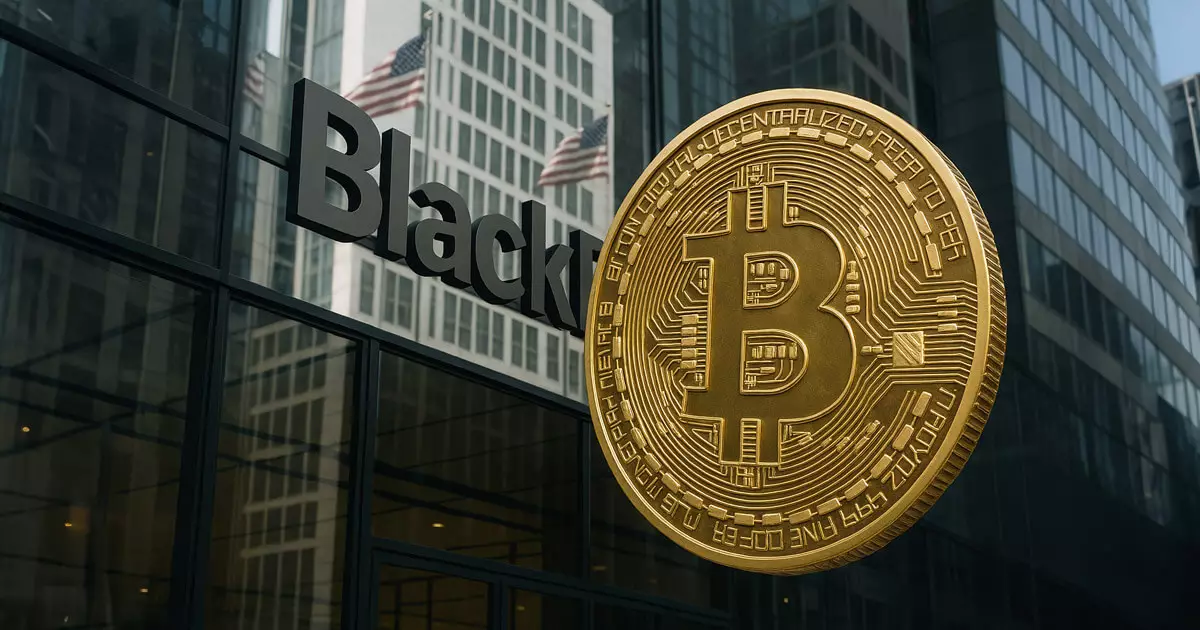In a landscape where financial markets are rapidly evolving, BlackRock’s recent decision to enhance the custodial framework of its iShares Bitcoin Trust (IBIT) is nothing short of monumental. The establishment of Anchorage Digital Bank N.A. as a secondary custodian forms part of a broader strategy that reflects an urgent necessity in the asset management realm—diversifying custodial relationships. This pivotal move, articulated in the Form 8-K filing dated April 7, 2025, raises questions about the existing custodial models that have long dominated Bitcoin management. Traditional frameworks, where a single entity bears the entire risk and responsibility, now appear less relevant in the face of increasing challenges and volatility in the digital asset space.
BlackRock’s strategic adoption of a dual-custodian model with Anchorage is both prudent and forward-thinking. While Coinbase has operated as the primary custodian up till now, the incorporation of Anchorage offers a cushion against unforeseen disruptions. Nevertheless, it should be noted that merely adding a second custodian might not be a panacea. The potential for redundancy should stem from a comprehensive understanding of the nuances and the evolving dynamics of Bitcoin as an asset class, rather than simply multiplying custodial options for the sake of it.
Anchorage: A Rising Star in Custodial Services
By selecting Anchorage, a federally chartered digital asset bank, BlackRock is aligning itself with institutions that uphold rigorous banking standards. This selection signifies a vote of confidence in Anchorage’s ability to handle Bitcoin custody amid an increasingly complex regulatory environment. For an industry filled with uncertainty, operational integrity and compliance are paramount. Anchorage’s national trust bank charter distinctly sets it apart from other competitors and validates BlackRock’s preference for stability over speculation.
The custodial services environment is often fraught with uncertainty, as digital assets continue to face a constantly shifting regulatory landscape. The reliance on a custodial system, once unchallenged, is now under scrutiny. Anchorage’s Federal Oversight offers a glimmer of hope in a world clamoring for clear guidelines and dependable custodianship. Here, BlackRock has made a calculated move—one that could pay dividends by ensuring compliance and establishing trust with institutional investors skeptical of Bitcoin’s long-term viability.
Risk Mitigation: A Revolving Door of Challenges
Incorporating a second custodian is not merely about creating a safety net; it reflects an awareness of the intricate web of risks associated with digital assets. Recent history has taught a harsh lesson about the volatility and operational risks related to both the assets themselves and the structures that hold them. BlackRock’s decision is a testament to its understanding that operational disruptions can emerge from myriad sources—technical failures, regulatory shifts, or even unforeseen market dynamics.
In deploying Anchorage as an auxiliary custodian, BlackRock is not only prioritizing risk mitigation; it is embracing a proactive stance. This foundational layer of resilience against potential fallout is indicative of a more mature market sentiment that recognizes Bitcoin’s security and storage challenges are not just isolated incidents, but a recurring reality that must be strategically addressed.
The Reputation Game: Establishing Fidelity and Trust
In the arena of digital assets, reputation is everything. The ineffable qualities of trust and credibility cannot be overlooked—this is where reputational risk becomes a decisive factor. BlackRock’s reputation as a financial titan inherently boosts the credibility of its iShares Bitcoin Trust. However, any frailty in custodianship could undermine the entire operation. By including Anchorage and reinforcing its compliance posture, BlackRock seeks to augment its credibility while demonstrating a commitment to safeguarding investor interests.
This is especially critical as institutional investors jump into the fray, eager to participate but wary of taking undue risks. IBIT has garnered impressive inflows and maintained its position as a top-tier Bitcoin ETF, but the need to reassure investors remains pivotal. The cautious optimism surrounding this dual-custodian structure positions BlackRock not merely as a participant but as a leader, steering unswerving faith in responsible Bitcoin custodianship.
Ultimately, the strategic orchestration of these relationships signals a profound shift in how institutional finance will navigate the challenges of digital assets. BlackRock is advocating for a paradigm where diversified custodial relationships become the founding standard rather than an exception. The aim is not just for resilience but for a reimagined vision of fiduciary responsibility in the Bitcoin economy.

